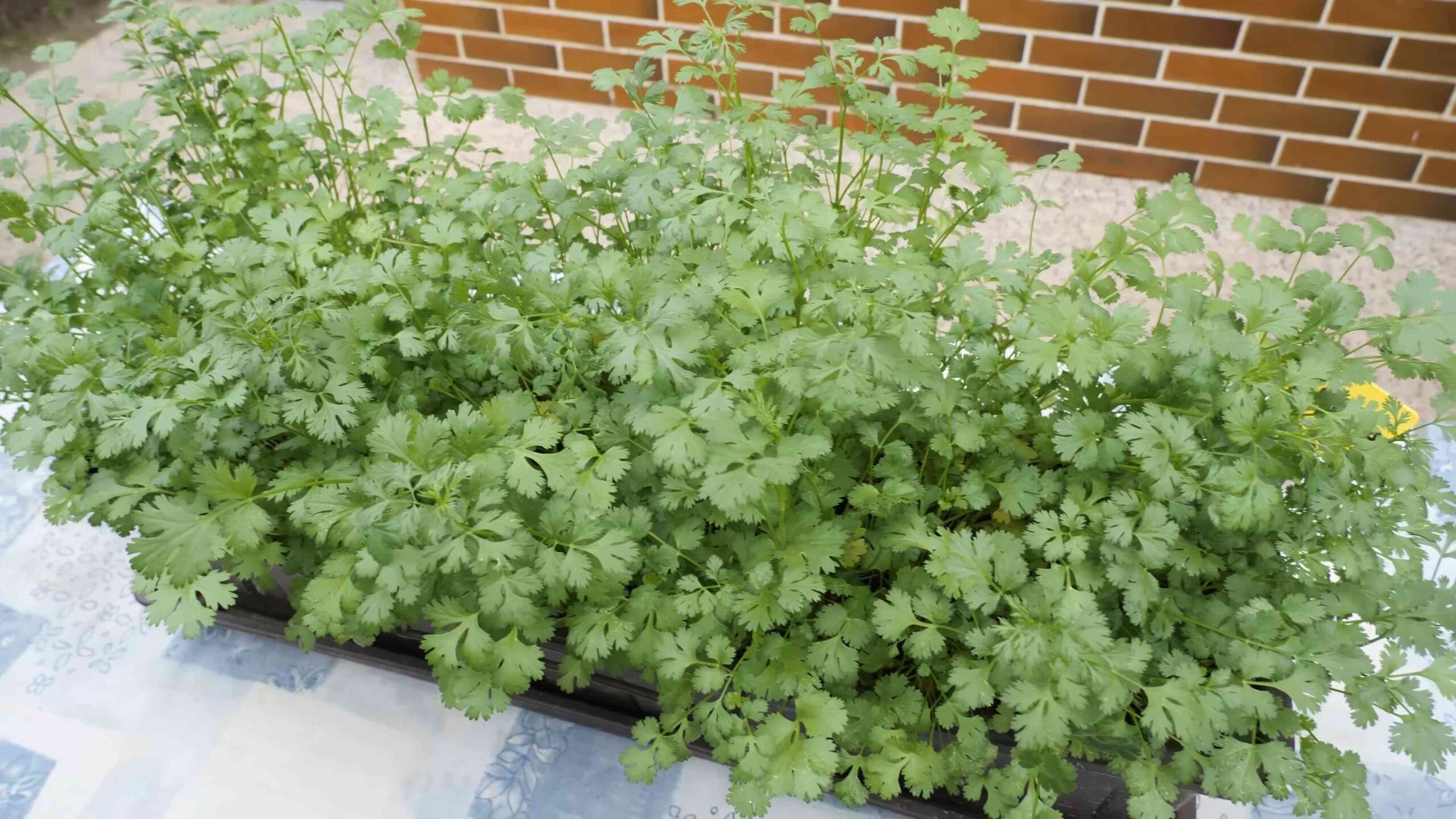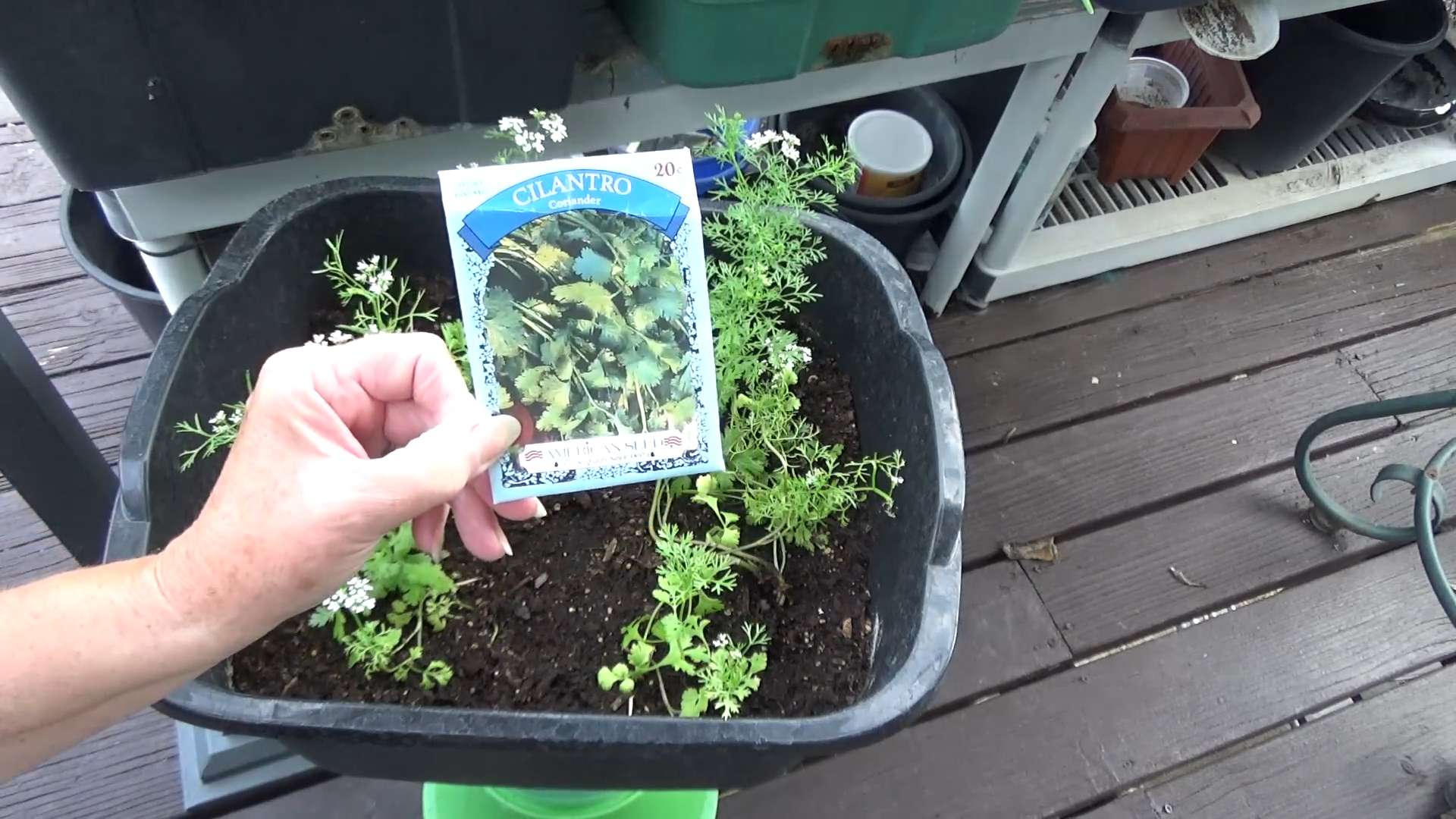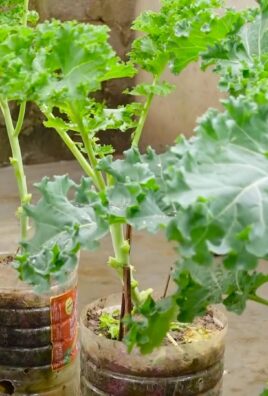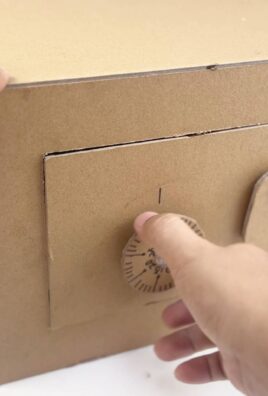Grow Cilantro at Home? Absolutely! Imagine stepping outside your back door and snipping fresh, vibrant cilantro to add a burst of flavor to your tacos, salsa, or even a simple summer salad. No more wilted bunches from the grocery store – just pure, homegrown goodness at your fingertips. For centuries, cilantro (also known as coriander in some parts of the world) has been a staple in cuisines across the globe, from the vibrant markets of Mexico to the fragrant kitchens of Southeast Asia. Its bright, citrusy notes have elevated dishes for generations, and now, you can easily bring that same culinary magic to your own home.
But let’s be honest, sometimes growing herbs can feel a little intimidating, right? Maybe you’ve tried before and ended up with leggy, sad-looking plants. That’s where these simple, yet effective, DIY tricks come in! I’m going to share my favorite hacks for successfully grow cilantro at home, even if you don’t have a green thumb (yet!). We’ll cover everything from choosing the right container and soil to watering techniques and even how to prevent bolting. So, ditch the expensive store-bought herbs and get ready to enjoy a constant supply of fresh, flavorful cilantro – you’ll wonder how you ever lived without it!

Grow Your Own Cilantro: A Beginner’s Guide
Hey there, fellow herb enthusiasts! Ever find yourself constantly buying cilantro at the grocery store, only to have it wilt away in your fridge before you can use it all? I know the feeling! That’s why I decided to take matters into my own hands and start growing my own cilantro at home. And guess what? It’s way easier than you might think! This guide will walk you through everything you need to know to have a thriving cilantro patch right in your kitchen or garden.
What You’ll Need
Before we dive in, let’s gather our supplies. Here’s a checklist of everything you’ll need to successfully grow cilantro:
* Cilantro Seeds: You can find these at most garden centers or online. Make sure you’re getting seeds specifically for cilantro, not coriander (which is the same plant, but we want the leaves!).
* Potting Soil: Use a well-draining potting mix. Avoid using garden soil, as it can be too heavy and compact.
* Container: Choose a pot that’s at least 6 inches deep and wide. Cilantro has a taproot, so it needs room to grow.
* Watering Can or Spray Bottle: For gentle watering.
* Sunny Location: Cilantro needs at least 4-6 hours of sunlight per day.
* Optional: Seed Starting Tray: If you prefer to start your seeds indoors.
* Optional: Grow Light: If you don’t have a sunny spot, a grow light can help.
Getting Started: Planting Your Cilantro Seeds
Okay, now for the fun part! We’re going to plant those little seeds and watch them sprout into delicious cilantro.
1. Choose Your Planting Method: You have two main options: direct sowing or starting seeds indoors. Direct sowing means planting the seeds directly into the pot where they’ll grow. Starting seeds indoors gives you a head start, especially if you live in a colder climate. I’ll cover both methods.
2. Direct Sowing (My Preferred Method):
* Prepare Your Pot: Fill your chosen container with potting soil, leaving about an inch of space at the top. Gently pat down the soil.
* Sow the Seeds: Sprinkle the cilantro seeds evenly over the surface of the soil. Don’t overcrowd them; give them about an inch of space between each seed.
* Cover the Seeds: Lightly cover the seeds with about ¼ inch of soil.
* Water Gently: Use a watering can or spray bottle to gently moisten the soil. Be careful not to wash the seeds away.
* Find a Sunny Spot: Place the pot in a sunny location that gets at least 4-6 hours of sunlight per day.
* Keep the Soil Moist: Water regularly to keep the soil consistently moist, but not soggy.
* Wait and Watch: Cilantro seeds typically germinate in 7-10 days. Be patient!
3. Starting Seeds Indoors (For a Head Start):
* Prepare Your Seed Starting Tray: Fill the cells of your seed starting tray with potting soil.
* Sow the Seeds: Place 2-3 cilantro seeds in each cell.
* Cover the Seeds: Lightly cover the seeds with about ¼ inch of soil.
* Water Gently: Use a spray bottle to gently moisten the soil.
* Provide Light: Place the seed starting tray under a grow light or in a very sunny window.
* Keep the Soil Moist: Water regularly to keep the soil consistently moist.
* Transplant Seedlings: Once the seedlings have a few sets of true leaves (usually after 2-3 weeks), transplant them into your chosen container. Be gentle when transplanting to avoid damaging the roots.
Caring for Your Cilantro Plant
Once your cilantro seedlings have emerged, it’s time to focus on providing them with the care they need to thrive.
1. Watering: Cilantro needs consistent moisture, but it doesn’t like to be waterlogged. Water when the top inch of soil feels dry to the touch. Avoid overwatering, as this can lead to root rot. I usually check the soil moisture every day or two.
2. Sunlight: Cilantro loves sunlight! Make sure your plant is getting at least 4-6 hours of direct sunlight per day. If you don’t have a sunny spot, consider using a grow light.
3. Fertilizing (Optional): Cilantro doesn’t need a lot of fertilizer, but you can give it a boost with a diluted liquid fertilizer every few weeks. Look for a fertilizer that’s specifically designed for herbs. I personally don’t fertilize mine very often, and it still grows well.
4. Pinching Back: Once your cilantro plant is about 6 inches tall, start pinching back the stems. This encourages the plant to bush out and produce more leaves. Simply snip off the top few leaves of each stem.
5. Bolting: Bolting is when the cilantro plant starts to produce flowers and seeds. This usually happens when the weather gets hot. Once cilantro bolts, the leaves can become bitter. To prevent bolting, try to keep your plant in a cool location and provide it with plenty of water. You can also pinch off any flower buds as soon as you see them.
Harvesting Your Cilantro
Now for the best part – harvesting your homegrown cilantro!
1. When to Harvest: You can start harvesting cilantro leaves as soon as the plant is about 6 inches tall.
2. How to Harvest: Use scissors or pruning shears to snip off the stems near the base of the plant. Avoid cutting off more than one-third of the plant at a time.
3. Harvest Regularly: Harvesting regularly encourages the plant to produce more leaves.
4. Enjoy Your Harvest: Use your fresh cilantro in your favorite recipes! It’s delicious in salsa, guacamole, tacos, salads, and so much more.
Dealing with Common Cilantro Problems
Even with the best care, you might encounter a few problems along the way. Here are some common issues and how to deal with them:
1. Yellowing Leaves: Yellowing leaves can be a sign of overwatering, underwatering, or nutrient deficiency. Check the soil moisture and adjust your watering accordingly. If the soil is consistently moist, you might be overwatering. If the soil is dry, you might be underwatering. You can also try fertilizing your plant with a diluted liquid fertilizer.
2. Pests: Cilantro can be susceptible to pests like aphids and spider mites. If you notice any pests, try spraying your plant with insecticidal soap. You can also try hand-picking the pests off the plant.
3. Bolting: As mentioned earlier, bolting is when the cilantro plant starts to produce flowers and seeds. To prevent bolting, try to keep your plant in a cool location and provide it with plenty of water. You can also pinch off any flower buds as soon as you see them. If your cilantro plant does bolt, you can still harvest the seeds (coriander) and use them in your cooking.
Extending Your Cilantro Harvest
Cilantro is an annual plant, which means it completes its life cycle in one year. However, you can extend your cilantro harvest by following these tips:
1. Succession Planting: Plant new cilantro seeds every few weeks to ensure a continuous supply of fresh cilantro.
2. Cool Location: Keep your cilantro plant in a cool location to prevent bolting.
3. Pinch Off Flower Buds: Pinch off any flower buds as soon as you see them to prevent the plant from bolting.
4. Harvest Regularly: Harvesting regularly encourages the plant to produce more leaves.
5. Save Seeds: If your cilantro plant does bolt, you can save the seeds (coriander) and use them to plant new cilantro plants.
Troubleshooting
Let’s address some common questions and concerns I’ve encountered while growing cilantro.
* “My cilantro seeds aren’t germinating!” Make sure your soil is consistently moist, but not waterlogged. Also, ensure the seeds are getting enough light. If you’re starting seeds indoors, a heat mat can help speed up germination.
* “My cilantro is growing leggy and weak.” This usually indicates insufficient light. Move your plant to a sunnier location or supplement with a grow light.
* “My cilantro leaves taste bitter.” This is a sign that your cilantro has bolted. Try to prevent bolting by keeping the plant cool and pinching off flower buds.
* “My cilantro plant died suddenly.” Overwatering is a common culprit. Make sure your pot has drainage holes and allow the soil to dry out slightly between waterings.
Final Thoughts
Growing your own cilantro is a rewarding experience. Not

Conclusion
So, there you have it! Growing cilantro at home isn’t just a fun project; it’s a game-changer for your culinary adventures. Forget those sad, wilted bunches from the grocery store that cost a fortune and seem to turn yellow the moment you get them home. With a little effort and the simple steps outlined above, you can have a constant supply of fresh, vibrant cilantro right at your fingertips.
Why is this a must-try? Because the flavor difference is undeniable. Homegrown cilantro bursts with a bright, citrusy zest that store-bought cilantro simply can’t match. Imagine the difference it will make in your tacos, salsas, curries, and even your morning smoothies! Plus, you’ll be saving money, reducing food waste, and enjoying the satisfaction of nurturing something from seed to table. It’s a win-win-win!
But don’t stop there! Experiment with different varieties of cilantro. Some are more heat-tolerant than others, so find one that thrives in your climate. You can also try growing cilantro in different containers – from small pots on your windowsill to larger raised beds in your garden. Consider companion planting with other herbs and vegetables that benefit from cilantro’s presence, such as carrots and tomatoes.
And if you’re feeling adventurous, let some of your cilantro plants bolt (go to seed). Cilantro seeds, also known as coriander, are a delicious spice in their own right. Simply allow the plant to flower and dry out, then harvest the seeds. You’ll have two amazing ingredients from one plant!
We’re confident that once you experience the joy of harvesting your own fresh cilantro, you’ll never go back to buying it at the store. It’s a simple, rewarding, and delicious way to elevate your cooking.
So, what are you waiting for? Grab some seeds, find a sunny spot, and get growing! We can’t wait to hear about your experiences. Share your photos, tips, and questions in the comments below. Let’s create a community of home cilantro growers and inspire others to discover the magic of fresh, homegrown herbs. Happy gardening!
Frequently Asked Questions (FAQ)
Why is my cilantro bolting so quickly?
Bolting, or premature flowering, is a common issue with cilantro. It’s usually triggered by stress, such as high temperatures, lack of water, or poor soil. To prevent bolting, try these tips:
* Choose a heat-tolerant variety: Some cilantro varieties are specifically bred to withstand warmer temperatures. Look for varieties labeled “slow bolt” or “long standing.”
* Provide shade: In hot climates, provide afternoon shade to your cilantro plants. You can use shade cloth or plant them near taller plants that offer protection from the sun.
* Water regularly: Keep the soil consistently moist, but not waterlogged. Water deeply whenever the top inch of soil feels dry.
* Fertilize lightly: Avoid over-fertilizing, as this can also contribute to bolting. Use a balanced fertilizer at half strength.
* Succession planting: Plant new cilantro seeds every few weeks to ensure a continuous supply of fresh leaves.
How often should I water my cilantro?
The frequency of watering depends on several factors, including the climate, soil type, and container size. As a general rule, water your cilantro whenever the top inch of soil feels dry to the touch. In hot, dry weather, you may need to water daily. In cooler, wetter weather, you may only need to water every few days.
When watering, water deeply so that the water reaches the roots. Avoid overhead watering, as this can lead to fungal diseases.
What kind of soil is best for growing cilantro?
Cilantro prefers well-draining soil that is rich in organic matter. A good potting mix for containers is a blend of peat moss, perlite, and vermiculite. If you’re planting cilantro in the ground, amend the soil with compost or other organic matter to improve drainage and fertility. The ideal soil pH for cilantro is between 6.0 and 7.0.
Can I grow cilantro indoors?
Yes, you can absolutely grow cilantro indoors! Choose a sunny windowsill that receives at least 6 hours of direct sunlight per day. If you don’t have enough natural light, you can supplement with a grow light. Use a well-draining potting mix and water regularly. Be sure to rotate the pot regularly to ensure even growth.
How do I harvest cilantro?
Harvest cilantro leaves when they are young and tender. Simply snip off the leaves with scissors or your fingers. Avoid harvesting more than one-third of the plant at a time, as this can weaken it. Regular harvesting will encourage the plant to produce more leaves.
My cilantro leaves are turning yellow. What’s wrong?
Yellowing leaves can be a sign of several problems, including overwatering, underwatering, nutrient deficiency, or disease. Check the soil moisture and adjust your watering accordingly. If the soil is consistently wet, allow it to dry out slightly before watering again. If the soil is dry, water deeply.
You can also try fertilizing your cilantro with a balanced fertilizer. If you suspect a disease, remove any affected leaves and treat the plant with a fungicide.
Can I freeze cilantro?
Yes, you can freeze cilantro to preserve it for later use. Wash and dry the cilantro thoroughly, then chop it into small pieces. Place the chopped cilantro in ice cube trays, fill with water or olive oil, and freeze. Once frozen, transfer the cilantro cubes to a freezer bag or container. You can also freeze cilantro by spreading it out on a baking sheet and freezing it until solid, then transferring it to a freezer bag.
Is cilantro the same as coriander?
Yes and no. Cilantro refers to the leaves and stems of the *Coriandrum sativum* plant, while coriander refers to the seeds of the same plant. So, technically, they are the same plant, but different parts of it. Both cilantro and coriander are used as culinary herbs and spices.
How long does it take for cilantro to grow from seed?
Cilantro typically germinates in 7-10 days. You can expect to harvest your first leaves in about 4-6 weeks after planting.
What are some good companion plants for cilantro?
Cilantro is a good companion plant for many vegetables, including carrots, tomatoes, peppers, and onions. It can help to repel pests and attract beneficial insects. Avoid planting cilantro near fennel, as they can inhibit each other’s growth.





Leave a Comment